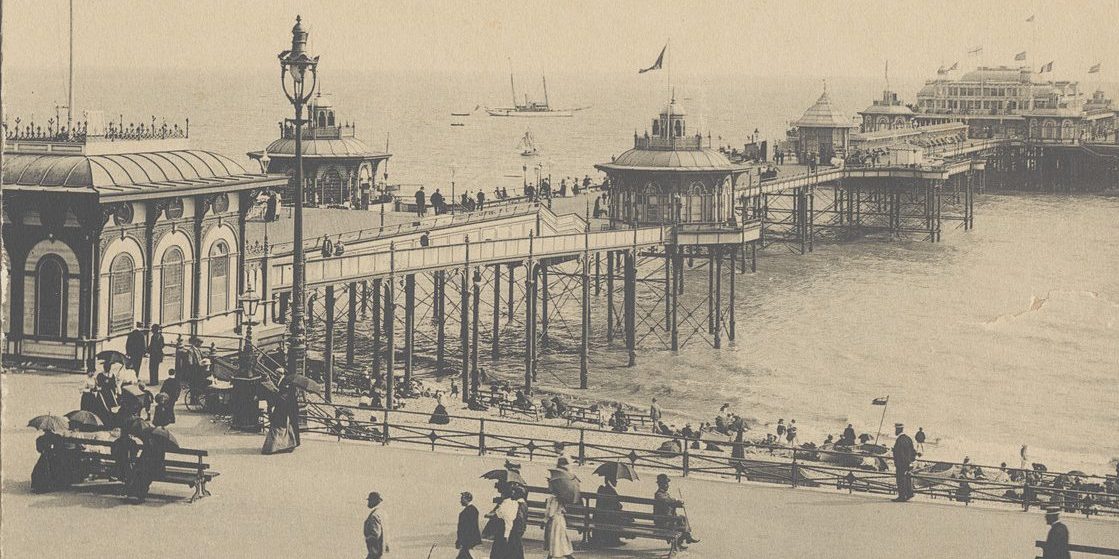BY OUR SPORTING CORRESPONDENT
As my profession indicates, I am naturally always on the qui vive for anything in the way of a “tip.” Meandering along the front a few days since, I espied a diminutive specimen of humanity, habited in a sort of loud check. Methoughts I could trace the lineaments of a well-known hero of the pigskin [jockey], and not wishing to lose the opportunity of being put on to a good thing, a casual remark soon put the personage and myself on conversational terms.
It was not long before I established the identity of my acquaintance, who somewhat to my astonishment turned out to be none other than David Abrahams, or “Thomas Tabby, Esq.” the cat of the Alhambra pantomime, a part which he played with a fidelity to nature seldom equalled. Having conformed to the custom inherent with Englishmen when they meet, I queried. “What did you think of the Alhambra Pantomime?” “One of the best I have ever taken part in,” he promptly replied.
In the course of conversation I learned that Mr Abrahams entered the profession at the mature age of four years, his first appearance being at the Lyceum in 1868, under the management of Mr E. T. Smith, contemporary with the Vokes. In this he represented the “Pocket Vance,” for which he received the munificent sum of half a guinea weekly, an amount then looked upon as a handsome “screw.”
Mr Abrahams may duly be described as a “pocket edition” of an actor, and his size favours the parts which he takes – that of more or less domesticated animals, and as an imitator of them he has no equal at the present time. Early in his day he played the cat to Miss Henriette Hodgson’s (Mrs Labourchere) “Dick” at the Royalty on two occasions, and has fulfilled the same obligation to Kate Santley, Topsy Venn, Alice Holy, and a host of other celebrities in London and the Provinces: in fact, he has sustained the character nearly three thousand times.
His rise on the boards was very rapid, and his services always in great demand. In 1877 he was engaged at the Lyceum by Mr Irving to take part in the Ball Masque in “The Corsican Brothers” in which he appeared as a French poodle, a character which was entirely original. Subsequently he went through America on tour with Mr Irving as ballet master, and played the part of “The Ape” in “Faust”. One of his greatest hits was a “Man Friday,” in the pantomime of “Robinson Crusoe” at Drury Lane, which part he took as a minute’s notice owing to the sudden indisposition of one of the Company. For this he was presented with a very handsome diamond ring. Another great success was the donkey in Oscar Barrett’s pantomime of the Forty Thieves at the Crystal Palace. In “Alice in Wonderland,” Mr Abrahams took a new departure and appeared at a white rabbit, his faithful portrayal of the characteristics of which was remarkable. Amongst the places he visited in this role was the Royal, under the management of the late Mrs Nye Chart.
Mr Abrahams’ methods of training for his various parts are directly opposite to that pursued by an athletic. He does not merely don the guise of any animal which he is presumed to represent, and then perform numerous antics, but studies nature itself. When he depicted an ape at the Lyceum he had four juvenile apes, all of whom he took daily to the Zoo for object lessons.
How true he is to nature those who saw his performance at the Albambra pantomime all agree, the agile manner in which he ran round the tier of boxes and then leaped on to the stage being worthy of any member of the feline speices, whilst his “Boxing Kangaroo” performance was one of the most humorous ever put on the stage. He was offered an engagement at the Olympic pantomime this year, which has turned out such a great success, and he now deplores the fact that he could not accept the offer, having made prior arrangements.
“Have you ever appeared in Brighton before?” I queried. “On several occasions,” he replied. “I am a member of the Rosa Troupe. Mdlla Rosa is my sister, and in 1881, under Mrs Nye Chart’s management, we had an engagement in the pantomime of ‘Jack and Jill,’ in which we did the well-known ‘Dolls’ and Demons’’ dance.” In reply to my question as to what were his prospects for the future, Mr Abrahams said his ambition was to play a gorilla, and that he had in course of preparation a “Monkey ballets,” in which he and six others would take part, and he hoped that there was some probability of this being first produced in Brighton, and at no distant date.
Transcribed from the original article available at the British Newspaper Archive.
Please note that most of the information in this article is backed up by other evidence. There are some elements which are not. His first performance was not at the Lyceum in 1868, and if he first appeared at the age of four it would have been nearer to 1864. There is also evidence he did not appear on the tour of Alice in Wonderland in Brighton, as the part by that time was played by Master S. Solomon (see lewiscarrollresources.net).
Photo credit: Royal Pavilion & Museums, Brighton and Hove, Brighton West Pier 1890s. Not part of original newspaper article.
